Health Impact News Comments by Editor Brian Shilhavy:
In November 2014 the Government Accounting Office (GAO) issued the first report on America’s “Vaccine Court,” known as the National Vaccine Injury Compensation Program (NVICP), in almost 15 years.
As we have previously reported here at Health Impact News, the Vaccine Injury Compensation Trust Fund, which is funded by taxes paid on vaccines, has now grown to about $3.5 BILLION. Previous GAO reports on the NVICP have criticized the rate at which this fund was growing and being kept by the federal government, instead of being paid out to victims who have been injured or killed by vaccines. (See: How the Government has Earned $3.5 BILLION from the Claim that Vaccines Don’t Cause Autism.)
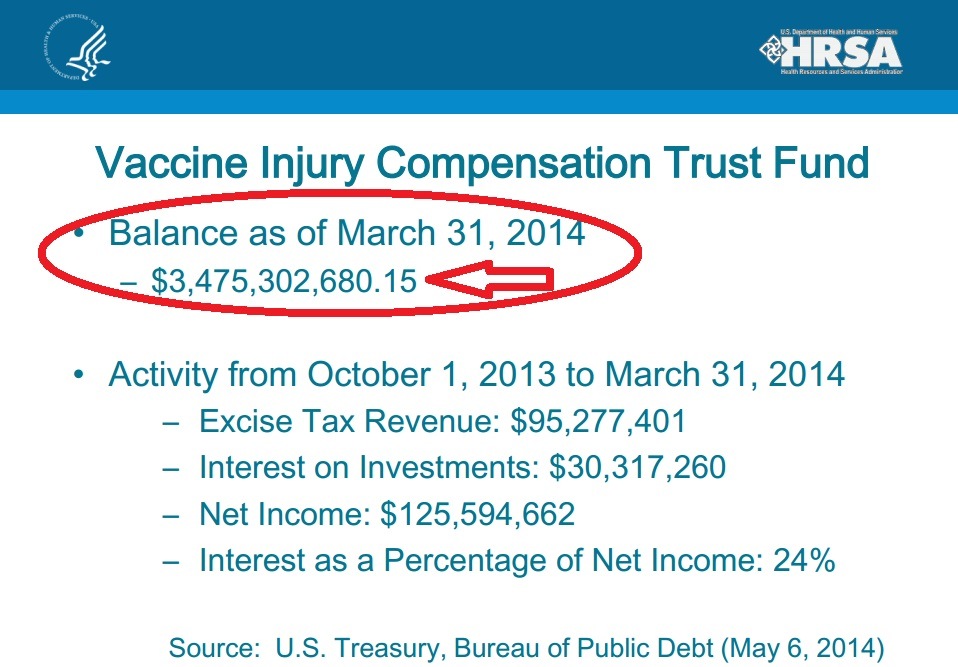
The November 2014 GAO report on Vaccine Injury Compensations revealed some problems with the National Vaccine Injury Compensation Program that the mainstream media reported. AP published an article written by Justin Pritchard and Mitch Weiss which highlighted a few of the problems uncovered by the GAO report, such as:
Congress created the program to quickly and generously pay for medical care in the rare cases when a shot to prevent one sickness likely caused serious health complications instead. The AP found that the program has heaped additional suffering on thousands of families, including delays that have stretched a decade or more.
The Government Accountability Office’s report noted how a program established a generation ago to help children injured by government-recommended vaccinations such as measles and chicken pox is now dominated by claims filed by adults who received a flu shot. Those cases typically claim that the adult suffered from Guillain-Barre Syndrome, in which the immune system attacks the nerves. (Source.)
But there are many more problems associated with the National Vaccine Injury Compensation Program that the mainstream media is not covering, so I have invited Wayne Rohde, author of a recently published book on this topic, The Vaccine Court: The Dark Truth of America’s Vaccine Injury Compensation Program, to give a more in depth report that you are unlikely to read in the mainstream media.
GAO Report – Failure to Raise Public Awareness of the Vaccine Injury Compensation is a Critical Flaw
by Wayne Rohde and Louis Conte
Special to Health Impact News
The GAO Report Failed to Interview Petitioners
On November 21, 2014 the General Accounting Office (GAO) released a much anticipated report on a procedural audit of the National Vaccine Injury Compensation Program (NVICP). The report demonstrates that the GAO did not go far enough in examining the inherent conflicts of interest which impair the program and the on-going injustices inflicted upon people with vaccine injuries.
Congressman Darrell Issa, chairman of the House Oversight and Government Reform Committee (OGR) asked the GAO, often referred to as the independent watchdog of the Congress, to review the practices of the NVICP, which many refer to as the ‘Vaccine Court’. The NVICP is administered by the Secretary of Health and Human Services although case decisions are made by Special Masters (not Judges) who are ultimately reviewable by the US Court of Claims.
The GAO conducted interviews with federal agencies including staff attorneys from DOJ Civil Torts Division, attorneys from the Vaccine Bar that represent petitioners, Health Resources Service Administration (HRSA), the Office of Special Masters (OSM), and members of the Advisory Commission on Childhood Vaccines (ACCV). However, the GAO failed to interview petitioners who may or may not have been awarded compensation.
NVICP No Longer a Viable Justice Venue for the Vaccine Injured
The authors of this article have interviewed hundreds of families over the past seven years about their experiences with the NVICP. Based on our work, as detailed in our books and published articles, the NVICP is no longer a viable justice venue for the vaccine injured as Congress intended.
The NVICP really ought to stand for The National Vaccine Injury Concealment Program. The GAO would have been better informed had they reached out to petitioners and investigated the issues that families are experiencing. In contrast to the number of interviews with federal staff, the sampling of families with direct contact with the VICP was dismal.
GAO Report: Failure to Educate Public on Availability of Vaccine Compensation Program
The GAO report did touch on one key failure of the Secretary of Health and Human Services; Congress required the Secretary to promote and conduct public awareness of the NVICP.
§ 300aa-10. Establishment of program [1]
(a) Program established. There is established the National Vaccine Injury Compensation Program to be administered by the Secretary under which compensation may be paid for a vaccine-related injury or death.
(b) Attorney’s obligation. It shall be the ethical obligation of any attorney who is consulted by an individual with respect to a vaccine-related injury or death to advise such individual that compensation may be available under the program for such injury or death.
(c) Publicity. The Secretary shall undertake reasonable efforts to inform the public of the availability of the Program.
An analysis of the history of the program demonstrates that the Office of the Secretary has utterly failed to undertake reasonable efforts to inform the public about the NVICP since the program commenced in 1988.
The initial failure in this regard was the Secretary’s duty to alert the public about the filing deadline for pre-act petitions for those injured by vaccines prior to the establishment of the NVICP. The original deadline was October 1990. Those who claim injury from the DPT, polio, or other vaccine they received in the 1940’s, 50’s, 60’s, 70’s or early 80’s had an opportunity to file a claim for compensation.
Interviews conducted with the few attorneys who handled petitions at that time, revealed that most people did not know of the deadline to file. The number of petitions received was far less than originally forecasted, so the deadline was extended to February 1991. Public notification regarding the extension was minimal.
The second significant failure of the Office of the Secretary to inform the public came during 1999 when the Hepatitis B vaccine was included in the Program. If not for the aggressive outreach by a few attorneys, many vaccine-injured individuals would not have filed a petition seeking compensation.
Many of those who filed were awarded compensation but it is likely that the vast majority of the injured never knew to do so.
Failure to Warn the Public on Vaccine Dangers and Compensation Program is Intentional
By the mid-1990’s, officials working in the program, particularly Dr. Geoffrey Evans, Director of the Division of Vaccine Injury Compensation (now retired), publicly disclosed a bias against awarding compensation fearing that doing so could be interpreted by the public as questioning the safety of the vaccine program.
Evans told Washington Post journalist Arthur Allen in August of 1998,
“I’m not going to say that awarding too many people will undermine vaccine safety, but I look on the Internet, and I see that our statistics are taken out of context,” says Evans, the medical director of the compensation program. “And so it’s important that the table reflect what we think is really caused by the vaccines.” [2]
Dr. Evans’ comments show an inherent conflict within HHS – promoting vaccines while administering the program to compensate the injured victims of that program – had impacted his Division’s perspective on compensation in a manner Congress had not intended.
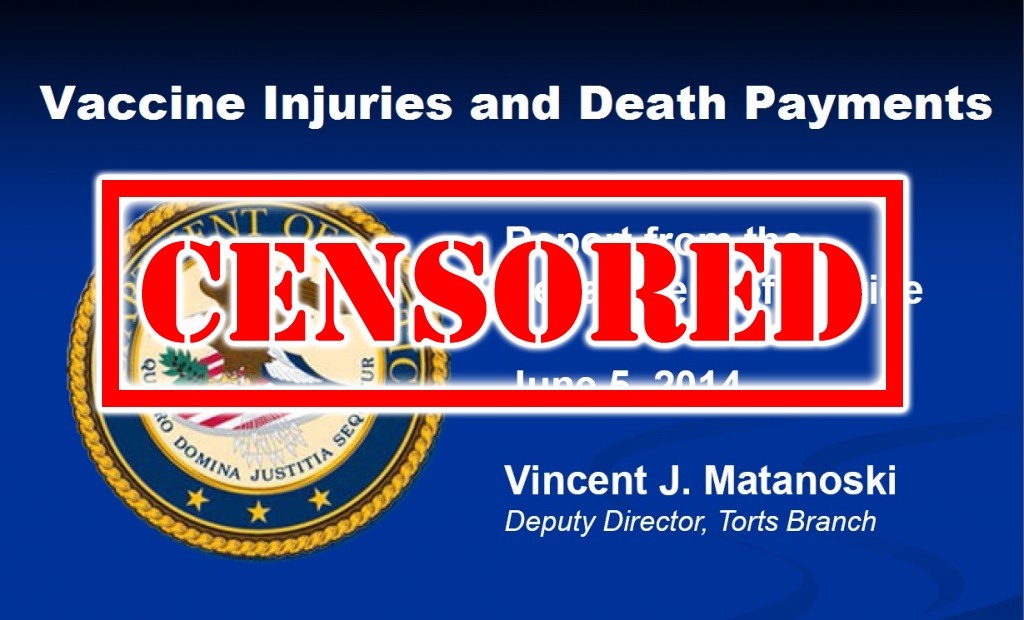
Department of HHS Conflict of Interest: Promoting Vaccines as “Safe” While Paying out Damages to Vaccine Injuries and Deaths
A GAO audit report completed in 2001 also pointed to the failure of HHS to adequately inform the public.
After years of delay, Banyan Communications was awarded a $300,000 contract in 2009 to conduct a public awareness campaign. Banyan Communications and its subcontractors conducted focus group meetings, a petitioner satisfaction survey, and developed a strategy to implement a public awareness program. Banyan held several meetings with a working group of the ACCV to inform the Secretary of developments before a final presentation in 2010.
Meeting minutes reflect that ACCV commission members expressed concern that the target audience should be the medical community and not the general public due to anticipated costs and budget issues. Echoing the earlier comments of the man still in charge, Dr. Geoffrey Evans, push back again came from ACCV members representing the medical community who expressed that a broad public-awareness campaign would create uncertainty regarding vaccine safety.
The end result: business cards and a brochure that could be distributed at medical conferences.
Myron Levin, an investigative reporter from the LA Times newspaper, in his 2004 article, “Vaccine Injury Claims Face Grueling Fight”, pointed out the following:
Some see this as a natural result of federal health officials’ fierce devotion to the immunization program – and their fear that if enough injuries were acknowledged, people would be afraid to get their shots. Universal immunization is a fundamental mission of HHS. One of its branches, the FDA, licenses vaccines, and another, the CDC, promotes their use with such slogans as “Vaccination: An Act of Love.” [3]
However, love wasn’t extended to the vaccine injured. Even though the ACCV approved the contract and the proposal from Banyan Communications in 2010, the public awareness program was killed. Commission members were not provided reasons why Banyan’s plan was not implemented. Banyan was paid $300,000 for business cards and brochures.
New Vaccines Added to Compensation Program, but Vaccine Injuries Not Listed
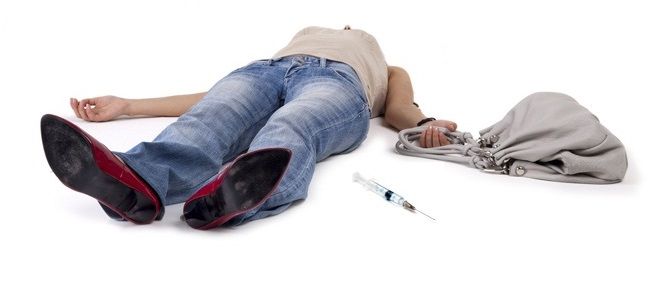
Fainting is a typical reaction from the Gardasil HPV vaccine, admitted by the drug manufacturer, but other injuries paid out of the Vaccine Compensation Program are less publicized, such as autoimmune diseases, Guillain-Barré syndrome, Multiple Sclerosis, and others. Current cases include “Primary Ovarian Failure”, or premature menopause.
When Hepatitis A, Human Papilloma Virus (HPV), and influenza vaccines were added to the Program, the lack of public awareness continued.
As pointed out in the recent GAO report, several of the vaccines recently added to the Program did not have their associated injuries added to the Vaccine Injury Table. Injuries from these vaccines were known from surveillance reports submitted to the Vaccine Adverse Events Reporting System (VAERS) and from the Institute of Medicine.
Government Health Authorities: Public Does Not Need to Know about Vaccine Compensation Program
Commentators aligned with the public health field of ‘Vaccinology’, the scientific study of vaccine development, reject any scrutiny of the NVICP.
To a ‘Vaccinologist’ the over-riding concern is the vaccine program and not the effects of the program on the injured. Whether the injured are advised of the existence of the NVICP is hardly a concern. A recent article from one of these commentators glossing over the GAO report states:
The report highlighted the importance of increasing public awareness. However, it’s important that we put the awareness issue in perspective. How many readers know of the tax court? How many of you heard of the Commodity Futures Trading Commission, which has the authority to adjudicate and enforce issues related to future markets? How many of those who are not immigrants know of the Board of Immigration Appeals? How many of you would know how to appeal a social security disability benefits determination? [4]
This particular commentator is spouting the party line. The public doesn’t need to know. The attempt to misdirect the public and maintain the status quo is clear.
Ignored is the reality that vaccines are mandated on children throughout the country. Every parent in the United States has a right to know that vaccine injuries occur and that the only legal recourse in the vast majority of instances is the NVICP.
Congress mandated the Secretary of Health and Human Services to inform the public of the existence of NVICP – not just medical insiders attending medical conferences – because they wanted the public to know that vaccine injuries happen.
Will Anything Change as a Result of the GAO Report?
The Human Resources Services Administration, apparently in response to the GAO report, announced that plans are underway to increase public awareness in 2015. They would use “plain language” in program literature, improve their website and target promotions to “health care providers, parents and expectant parents, adults aged 50 years and older (including Spanish-speaking older adults), and civil litigation and health attorneys.” [5]
Such promises have been made before. The Secretary and administrators of the NVICP did not respond well to the last GAO report issued 15 years ago. The GAO report, while not nearly thorough enough, correctly identified the Secretary’s failure to raise public awareness of the NVICP.
This failure is not minor. Every family in the country has been denied the information that Congress intended them to have.
Left Out of the GAO Report: The Voices of Families Who Have Tried to Use the Program
Over the course of the last 7 years, we have interviewed hundreds of families who experienced the injuries of loved ones who have been left with severe, incapacitating, life-long health impairments and even death.
What we have heard is startling.
The road of the vaccine injured is difficult; almost all were unaware of the NVICP, most received a federal mandated Vaccine Injury Statement after the administration of a vaccine, not before. When discussions about vaccine injuries did occur, few received help or guidance from their doctors.
When it comes to vaccine injury, people often find that they are on their own.
Most of the families we contacted reported that they learned about the NVICP through the National Vaccine Information Center (NVIC), a not-for-profit organization. [6]
Where is Congress to Enforce the Program?
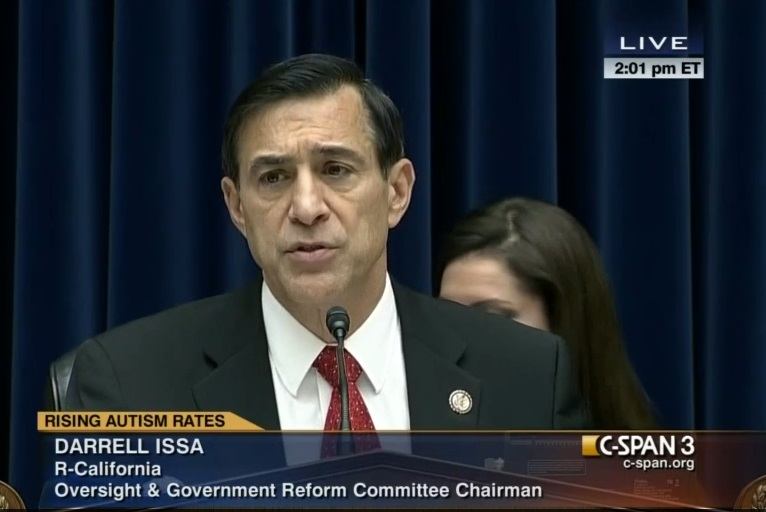
We encourage the Secretary to finally do what Congress intended and raise public awareness of the NVICP.
Because the history of the program shows that the Secretary has not complied with the intent of Congress because of the conflict of interest built into the program, we call on Congress to hold hearings on the NVICP.
It is time to raise awareness of vaccine injury and re-invent the system that is supposed to deliver compensation to the vaccine injured.
About the Authors
Wayne Rohde is the author of The Vaccine Court: The Dark Truth of America’s Vaccine Injury Compensation Program.
Louis Conte is a co-author of Unanswered Questions, the author of a novel, The Autism War and co-author, along with Tony Lyons, of the Newly Released Vaccine Injuries.
References
- http://www.hrsa.gov/vaccinecompensation/index.html
- http://www.washingtonpost.com/wp-srv/national/longterm/sunmag/shots/shot2.htm
- Myron Levin, LA Times reporter, www.articles.latimes.com/print/2004/nov/29/business/fi-vaccinecourt29
- http://shotofprevention.com/2014/12/09/government-accountability-office-report-on-vaccine-injury-compensation/
- http://abcnews.go.com/US/wireStory/court-heaps-grief-vaccine-victims-makes-wait-years-27770553?singlePage=true
- www.nvic.org
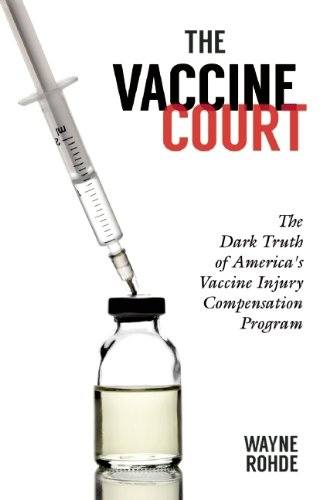
Free Shipping Available! Order here.




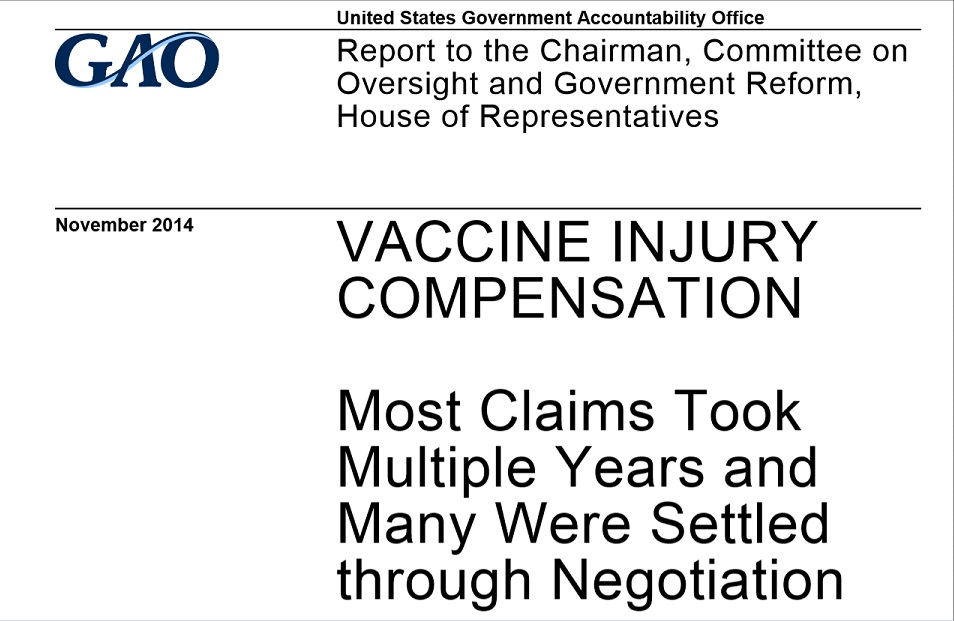
3 Comments